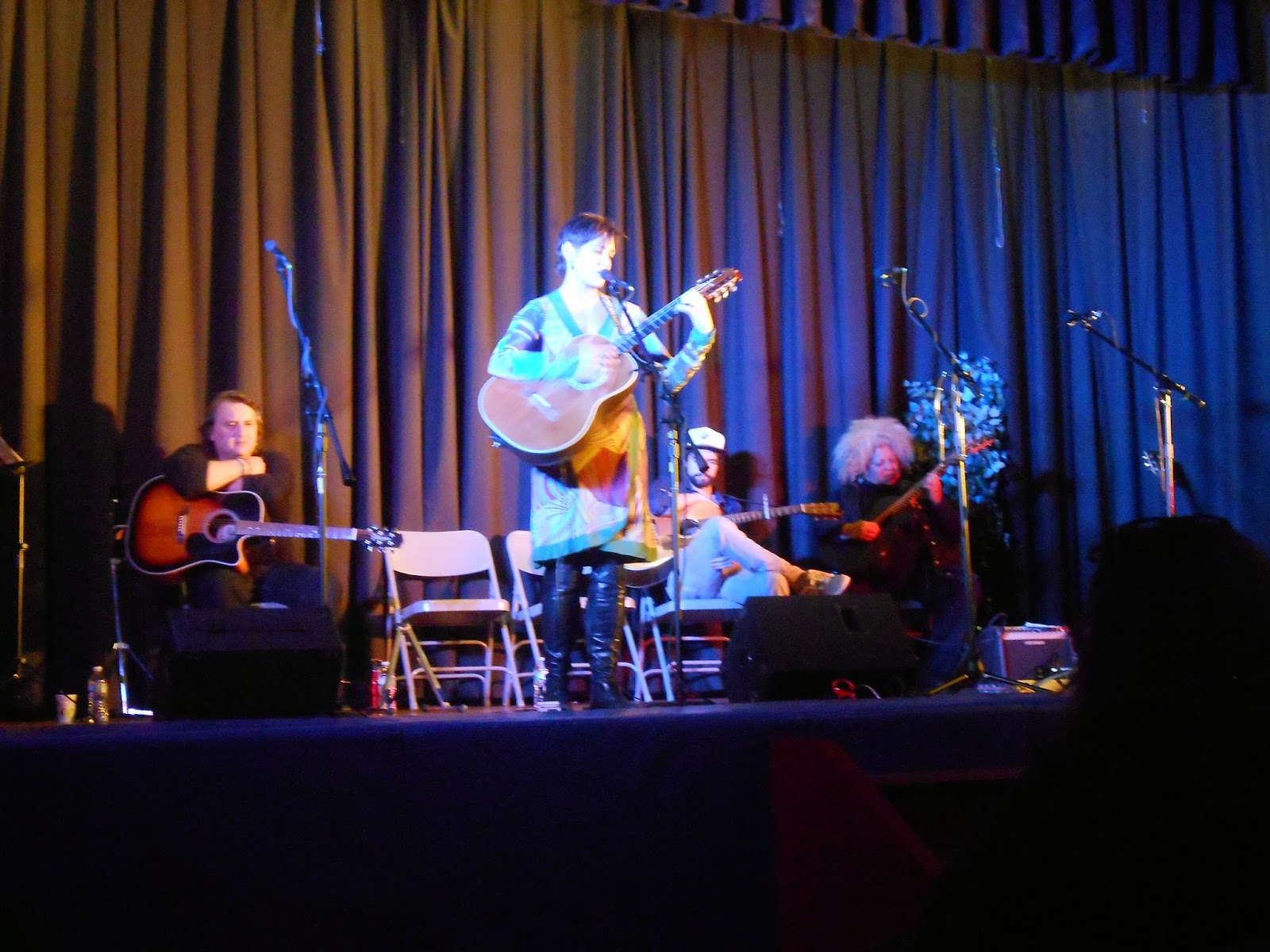 |
| "Kurt Cobain: The Last Session" was released Nov. 1 |
Jesse Frohman knew Kurt Cobain would be his Marilyn Monroe.
Looking back 21 years ago at what
would be the late Nirvana frontman's last formal photo shoot, the internationally recognized
photographer viewed the shoot with the iconic rocker as a “perfect storm.”
Seated before an intimate crowd of
Nirvana fans and photography enthusiasts at New York City’s NeueHouse, a
private workspace collective, on Nov. 18, Frohman – known for photographing
many names in rock royalty as DD Ramone, Green Day, and Soundgarden – opened up
to journalist Carlo McCormick about that day in August 1993, a shoot that
Frohman expected would turn out badly, but panned out into a collection of iconic
photographs celebrated nearly 20 years after Cobain’s April 5, 1994 passing
from a self-inflicted gunshot wound.
Photos flashed behind the men, which
are included in Frohman’s new book, “Kurt Cobain: The Last Session,” released
by Thames and Hudson on Nov. 1. The illustration is a tribute to the legendary band
that helped revolutionize a generation, and includes black-and-white and color
photos of the group from the photo session, one of Cobain’s last interviews
with punk historian Jon Savage, and an essay by pop culture expert Glenn
O’Brien, who explores the band’s legacy and shares his personal story about being
on a road trip in 1991 when he heard “Smells Like Teen Spirit” for the first
time.
Frohman partnered with PledgeMusic in
August to launch a pre-order campaign of the book where Nirvana fans can get
access to the making of it and view some of the featured photos.
 |
| Jesse Frohman is interviewed by Carlo McCormick in NYC. |
Going into the shoot -- photos from which
accompanied an article in the London Observer at the time -- Frohman expected five hours with
the group in different locations around Manhattan, which he was thinking
Central Park. When he arrived to pick up the band at their hotel, he was informed,
to his chagrin, by the band’s manager that he would have a mere half-hour with
Nirvana at the hotel. Placed in a type of DIY situation, as McCormick inferred,
Frohman made the best with what he was given, even the Pentax 67 camera he used
to shoot the group (which he recalled not being not accustomed to) before
heading off to an afternoon rehearsal before the band’s gig at Roseland
Ballroom to promote their fourth studio album, “In Utero.”
“Every photographer has a bag of tricks,”
said Frohman to the crowd, as photos from the shoot flashed behind the men from
an overhead projector.
In a few of the photos, Cobain is clothed
in patched jeans, a bomber hat, a leopard print garment that looked like it may have belonged to his wife, Courtney Love, (whom Frohman said had been at the hotel
that day) and his signature white-framed sunglasses that Frohman said Cobain
had refused to take off. Flashing back, Frohman said Cobain’s glasses were just
as expressive as his eyes.
“I did not get a sense of suicide,”
he recalled of Cobain on that day, “[but] a great deal of sadness.”
At the same time, however, Frohman said part of Cobain’s
persona was that of a prankster.
“His energy
makes that cinematic energy,” he told the audience. “[He had this] genius ability
of making something meaningful [out of something] mundane.”
Frohman added
that by not controlling the shoot too much, he let Cobain do his own thing
using props, which included an Evian bottle, cigarettes, and even a pot, which
Dave Grohl is seen playfully holding under Cobain’s rear in one of the photos
while he stands aside Krist Novoselic.
“I let him do his ballet moves,”
Froham said. “You have to let them express themselves or you’ll get a still
life.”
In doing, so the
photographer said there was a “moment of truth” between himself and Cobain, a
nonverbal connection that yielded “hero portraits” he’s proud of.
“When you have a
successful collaboration, you both get what you’re there for,” he said.





